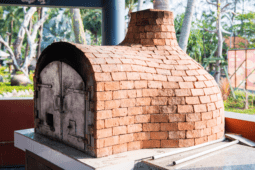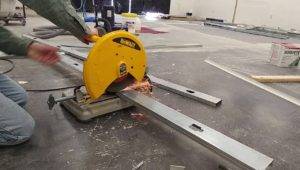ManMade Essential Toolbox: 7 Must-Have Books Every Woodworker Should Own
ManMade is sharing our picks for the essential tools we think every creative guy and DIYer needs. We've selected useful, long-lasting tools to help you accomplish a variety of projects, solve problems, and live a hands-on lifestyle that allows you to interact with and make the things you use every day. Today: the best woodworking books.

Here's the great thing about woodworking … it really hasn't changed much over the last few decades, even centuries. Sure, there are new tools and technologies that make things come together faster, light-weight power tools that cause less fatigue, and safety improvement measures like that table saw that stops if you put your tongue on it.
But the techniques are classic, and the purpose and design of hand tools are the same as they were for our grandparent's generation, and their grandparents before. All of which means – there's some staple, go-to techniques and joints and processes that every woodworker should know, and you don't have to make sure your sources are up-to-date before you seek out the best way to cut a mortise.
So, we suggest a basic library of classic woodworking techniques, tool use, and DIY approaches from before there even was a DIY movement…just the “doing.” Here are seven of our favorite best woodworking books. Some are pretty new, and some many years old, but the info in them will never be outdated.

1. Cabinet Making and Millwork by John L. Feirer.
I read this book cover to cover when I first got into woodworking, and its still my number one reference book when researching a project or technique. I believe it was intended as a textbook for a high school shop class, so it's laid out in great 101 style. It includes descriptions of everything from how sandpaper is made to best practices for shop math, and provides details for both hand and power tools.

Some of the sections on finishing are a bit outdated, but the techniques for cutting and shaping wood are timeless. There are several different editions, but anything after 1975 will work well. And the vintage photos are kinda awesome.
You can find this everywhere in secondhand bookshops, and online for pennies. Get it. Use it.

2. Bill Hylton's Power-Tool Joinery by Bill Hylton.
From the editors of Popular Woodworking magazine, this is a go-to woodworking book for setting up power tools for making joinery. Organized by joint type – rabbets, half-laps, dovetails, etc – it provides detailed instructions show you how to make each joint with every tool possible. I especially like the jigs and fixtures details that show you there's definitely more than one way to skin that cat.
Available for under $2.00 plus shipping at Amazon, or free in the Kindle lending library.
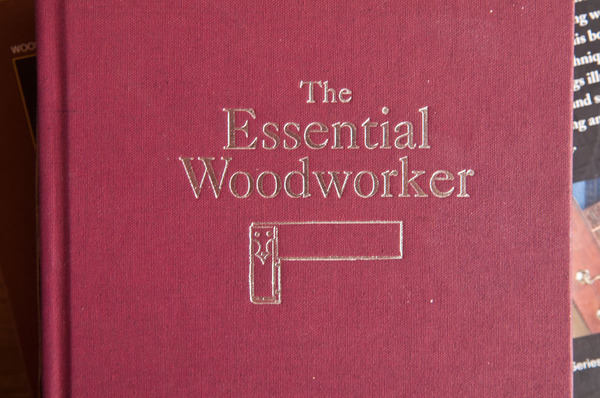
3. The Essential Woodworker by Robert Wearing.
This one's the polar opposite in approach of Hylton's book above: there's not a single power tool discussed, not even a drill. Instead, it focuses on skills – working real wood that twists, expands, shrinks, goes unsquare, and is of uneven thickness.
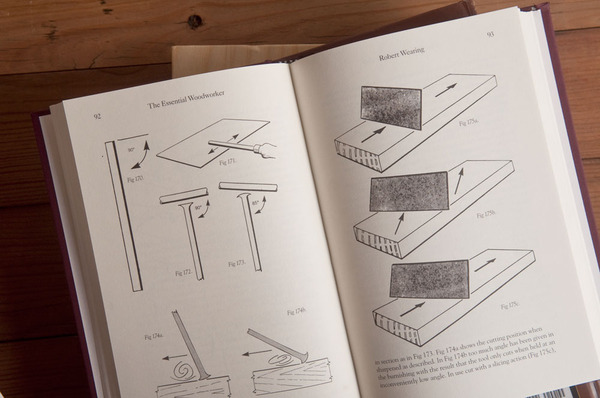
This updated edition includes 500 illustrations for cutting, planing, scraping, sanding, and facing and edging. It then applies those skills to some basic furniture projects such as cabinet cases or carcasses, drawers, handles, and boxes. Super fun, super informative, super traditional.
Available from Lost Art Press or as a used paperback from Amazon.
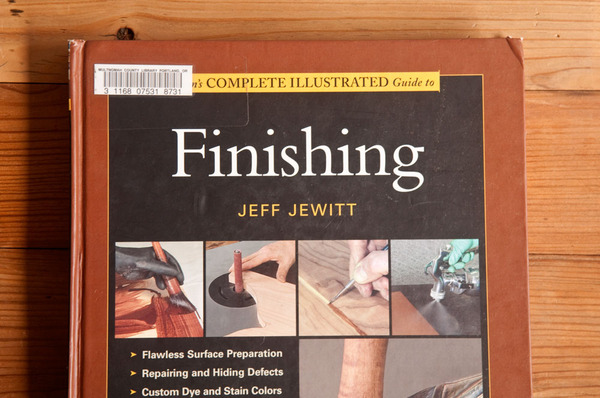
4. Taunton's Complete Illustrated Guide To Finishing by Jeff Jewitt.
This isn't the only book on the subject, but it's a great place to start. The real strength here is the bounty of color photos, which show exactly what's happening as you finalize your projects. It discusses finishing new projects, but also repairing old finishes and matching vintage pieces. It's not a “start here, end there” walk through, so you'll need to familiarize yourself with the way it's organized before beginning a project, but it is indeed a “complete illustrated guide” with encyclopedic-like thoroughness. Belongs in every library.
It's available new everywhere.

5. The Woodbook: The Complete Plates.
This one contains no instructions, no techniques, and no how-to information. Rather, it's the most complete collection of American wood samples ever created. Assembled between between 1888 and 1913 by New Yorker Romeyn Beck Hough and originally published in fourteen volumes, Taschen's publication “reproduces, in painstaking facsimile, all of the specimen pages from the original volumes… For all trees, now arranged in alphabetical order, three different cross-section cuts of wood are represented (radial, horizontal, and tangential), demonstrating the particular characteristics of the grain and the wealth of colors and textures to be found among the many different wood types. Also included in this special edition are lithographs by Charles Sprague Sargent of the leaves and nuts of most trees, as well as texts describing the trees’ geographical origins and physical characteristics.”
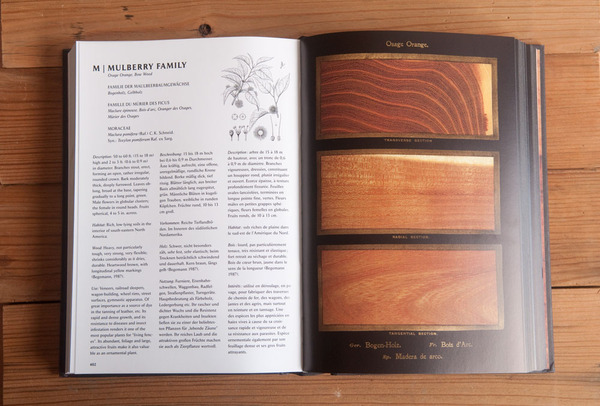
It's only $23.00. You want this book…just be sure to wipe up that drool.

6. The Complete Book of Woodworking by Tom Carpenter.
Another great reference book you'll come back to again and again. The latter half contains a bunch of projects you may or may not end up making (I bet you won't) but the details covered in the first half are as good as any overview-style book I've come across. When I want to make sure my process is up to snuff when I'm working on a ManMade post, this is the one I check first.
Available new or used from Amazon.
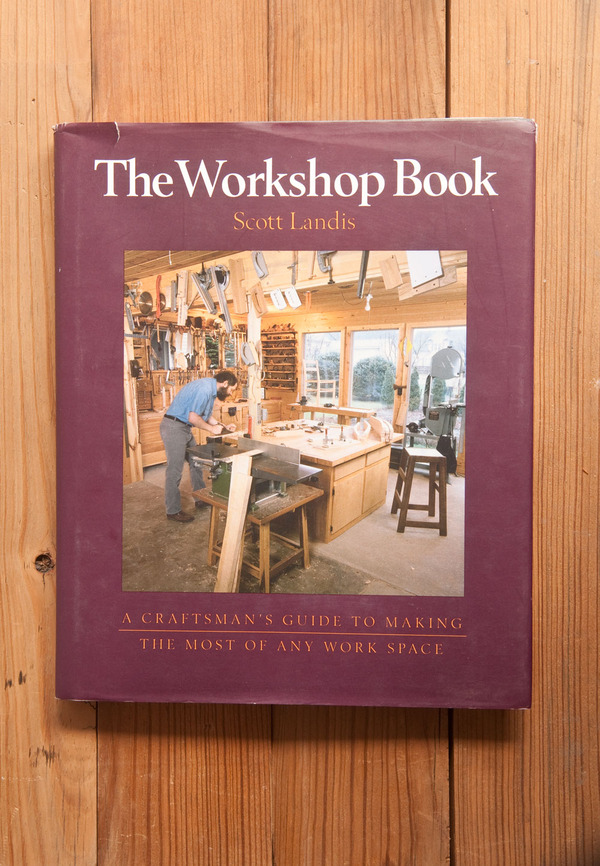
The Workshop Book: A Craftsman's Guide to Making the Most of Any Work Space by Scott Landis. This is not a new book – it was written in 1987. And the photographs reflect that. But what it lacks in that flip-through-the-pictures-and-get-major-workspace-envy, it makes up for in the actual text. It provides, mostly, creative solutions for a variety of different tasks from real professionals working in limited space. If you're interested in upgrading your space or building your dream shop from scratch, this really is a good place to start. It doesn't have a ton of up-to-date and practical advice; its more of a reflection on the nature of workshops in all their variety. And that never goes out of style.
Available new and used at Amazon.
Oh, and a few others I like that aren't quite essential, but super nice to have.
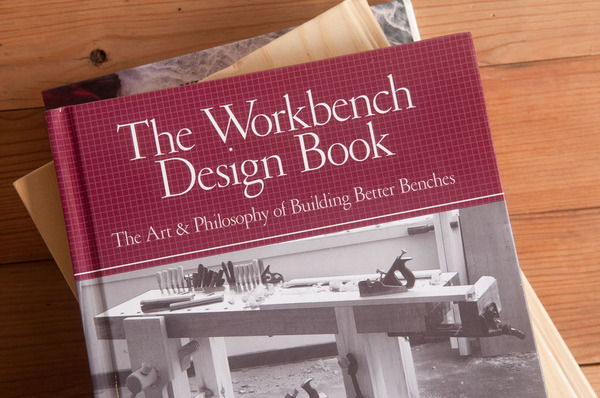
Honorable mention #1: The Workbench Design Book by Christopher Schwarz About one thing and one thing only, but it's the best on the subject I've seen. Don't build a new bench without it.
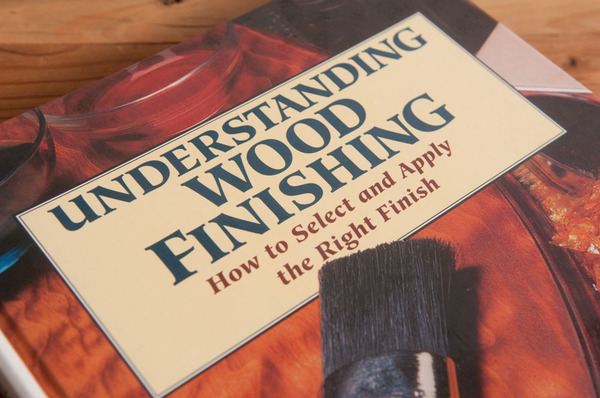
Honorable mention #2: Understanding Wood Finishing by Bob Flexner. A very, very fine practical and comprehensive guide to prepping and applying finishes. This one helps you make sense of what you read on the manufacturer's can, and figure out what you're really getting yourself into.




